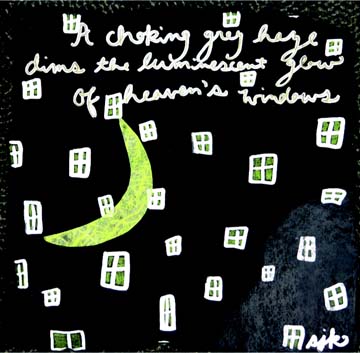from Erica K. Jacobsen, JCE High School Editor
We had the opportunity to see an acquaintance’s baby a few weeks after he was born. A couple months later, we ran into the family again, and it was a shock to see how large he had grown in that time. It reminded me of the years when my own children were quite young. Friends who saw us every few weeks would remark on how big the kids had grown since they’d seen them last. At the time, the comments surprised me; because I was around the kids all the time, I hadn’t noticed the accumulation of the small, incremental changes that could build up over the space of even a couple of weeks.
2010 marks the beginning of the teen years of the Journal of Chemical Education (JCE) Classroom Activity series. It was launched in 1997 as a resource designed specifically for high school educators and students. Over the years, it has undergone its own small, incremental changes. For example, the earliest Activities used red printing as well as black and white, and did not necessarily include suggested answers to the student questions. Some years later, the page names changed from “Instructor Side” and “Student Side” to “Instructor Information” and “Student Activity”. Those and other small changes have accumulated to give the appearance that JCE readers have come to recognize. Now, another change has arrived with the publication of Activity #104 in the February 2010 issue of the Journal of Chemical Education. It is more of a growth spurt as the Journal enters a new stage of maturation and development, with its transition to copublication with American Chemical Society (ACS) Publications. This is the first Classroom Activity since this transition, and the changes are significant. Activities will now be published more in the style of regular articles, and will not be printed on a perforated cardstock sheet. In print, you’ll see most of the information that would normally appear on the “Instructor Information” portion of the Activity. This will give readers enough background to determine whether they’re interested in using the Activity in their classrooms or outreach. Interested readers can then access the supporting information online, which will include the Student Activity Worksheet, a section of suggested answers to any worksheet questions, and other extras, such as data tables.
A major benefit of these changes is the elimination of the one page, front-and-back space constraint that Activities had in the past. For this reason, Harris and Walker’s Activity this month, “A Novel, Simplified Scheme for Plastics Identification”, easily had space for an extensive flowchart, several graphics, and additional references. Including the Student Activity Worksheet as a separate file also allows users to modify the text to suit their own needs. You may wish to add or delete a question depending on the grade level you are working with, or to modify the procedure depending on the materials you have available. Advanced students could even create their own flowchart to separate the seven recyclable plastics, using density data and other information from the Activity. The series will still include the great hands-on, minds-on Activities readers have come to know, love, and use. They’re just growing up a little bit more.
Laura’s Take on the Issue
from Laura Slocum, JCE High School Associate Editor
Last year was my inaugural year for including an Earth Day focus in my classes. I reconfigured my syllabus and saved the topic of gases and gas laws until April, and used a JCE Classroom Activity related to the ACS Chemists Celebrate Earth Day (CCED) theme Air: The Sky’s the Limit! I wanted to celebrate Earth Day in my classroom again this year. However, I was struggling with how to include this year’s CCED theme, Plants: The Green Machines . Then, I read Richard Treptow’s article “Carbon Footprint Calculations: An Application of Chemical Principles” and found the answer I needed for my teaching style.
A number of students have asked me, “What is a carbon footprint?” I answer their question, they say, “OK”, and we move on. However, I am not certain that I have really answered their question or that they understand. Have you found yourself in a similar place?
Treptow’s article started me thinking about several things I could incorporate into my class to connect with the Earth Day plant theme, while also more fully answering the student questions about carbon footprints. If all goes well, I will share my ideas with you in a later article. After all, that is what Erica and I have been encouraging each of you to do in this Journal.
Illustrated haiku from the 2009 Chemists Celebrate Earth Day haiku contest by 6th−8th grade winner Sara Jane of the Wilson Dam ACS Local Section.




* You can follow any responses to this entry through the RSS 2.0 feed.